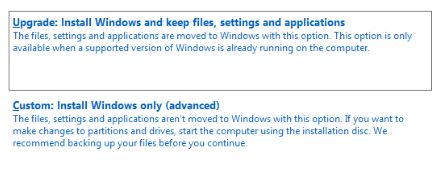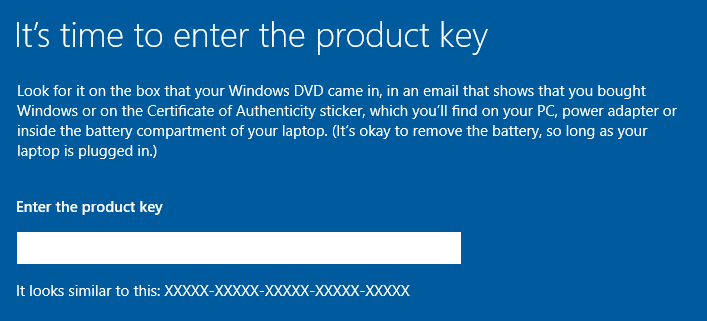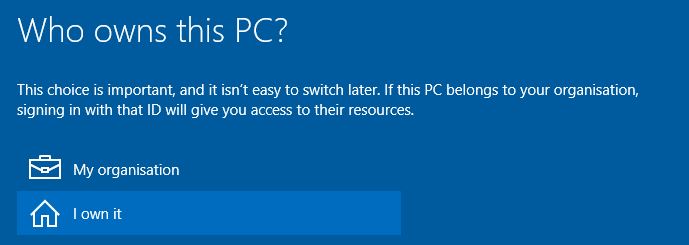How to Install Windows on your PC using a USB
If you are looking to do a clean install, you must keep in mind that you will need new activation keys to activate Windows 10. Before you do any upgrade or clean install, make sure you have a backup in hand should you need to revert to your previous Windows version. If you want to copy your previous data, such as documents, pictures, etc., then a backup is a must.
If you don’t have any important data that needs to be saved, you can proceed with the steps below directly.
Just to help you with making a decision; if i were you i would do a clean install instead of upgrade. This gives me satisfaction in a sense that my hard drive isn’t overloaded with any previous versions of Windows; i can be sure that there will not be any permission issues or user profile corruption issues but again; this is your choice.
The difference between Windows 10 Home and Pro.
Generally, Windows 10 Home is designed for home users and includes nearly everything a home user would need, while Windows 10 Pro is intended for business users (see the image below for comparison). If you are or were a home user, you should opt for Windows 10 Home.
Free hard disk space: 16 GB for 32-bit OS 20 GB for 64-bit OS
Graphics card: Microsoft DirectX 9 graphics device with WDDM 1.0 driver
Display: 800×600 screen resolution
Internet access to activate
First, purchase the activation keys for either Pro or Home, and then proceed with the steps below, unless you prefer to run a trial.
You can purchase the license and receive the code immediately for Windows 10 Home from Amazon for $119 by clicking here, or for Windows 10 Pro from Amazon for $199.99.

Clean Install Windows 10
1. Obtain the license and receive the code immediately for Windows 10 Home from Amazon for $119 by clicking here, or for Windows 10 Pro from Amazon for $199.99.
2. Now, download the Media Creation Tool, which will be used for creating the bootable ISO file. Before you download it, check your system type, which you can do by right-clicking “Computer” and selecting “Properties” on Windows 7. On Windows 8, search for the computer, right-click “This PC” from the search results, and select “Properties.” The system type field will tell you your current type (64-bit or 32-bit). Once you have this information, choose the correct version of the tool and download it from https://www.microsoft.com/en-us/software-download/windows10.
3. Once the tool has been downloaded, open it and run it. Choose “Create installation media for another PC.

4. Click Next, then choose your language, edition, and architecture. The edition should be the one for which you have a license key, e.g., Windows 10 Home or Windows 10 Pro. There will be 4 options listed, though those with “N” mean “Not with Media Player” suffixed to their names (e.g., Windows 10 Home N) and do not have media-related technologies like Windows Media Player or Camera. The cost of the N Editions is the same as the full versions, as the “Media Feature Pack” can be downloaded without charge from Microsoft.

5. Click ‘Next,’ and then choose the media on which you will be writing this.

If you choose the USB Flash option, make sure it is formatted and inserted into your computer; otherwise, you will receive an error. If you want to do this later, you can choose the ISO file option, which will create the ISO file on your system. You can then burn it onto a USB or DVD later. Click ‘Next’ and wait for the ISO file creation. Once it finishes, and if you have chosen the DVD option, you will need to write this to a disc.
You can use Imgburn to do this easily; it can be downloaded from https://www.imgburn.com/.
6. After the burning process is complete, reboot your computer and enter the BIOS to change the boot order from the hard disk to either your USB drive or DVD, depending on which installation method you are using for Windows 10. The BIOS and boot order options will be displayed on the POST screen; pay close attention when you restart the computer.
7. In the first step, choose the ‘Install Now’ option, agree to the terms, and then click ‘Next.‘ After the PC/system has booted from the bootable media, you will be given two options. Since we are doing a clean install, we will choose the ‘Install Windows Only’ option.

8. The next step will ask you where you want to install Windows 10; this should be on your hard disk. You can format it to completely wipe it off and perform a clean installation by selecting the Format option and then clicking Next .

9. The next steps are quite simple: select ‘next’ three times. You will then be asked to enter the key you have purchased, which should be entered at this point to activate it.

Enter your license key and proceed with the next steps on screen. If you do not have the key, then skip it but you will be prompted to enter it again, so skip it again. Since this will then be a trial version; you do need to activate it in order to use it in future.
10. During the installation, you will be asked to select specific settings; choose Express Settings.
11. Once that is done, you will be prompted to choose the owner of the PC. Here, select “I own it” or if it belongs to your organization, then select “My Organization.

12. You will then be given a choice to create either a local account or a Microsoft account; I prefer a local account. You can switch to a Microsoft Account later from PC Settings. To create a local account, choose “Skip this step.

13. Create your account details: your username, password, and hint. Then, click ‘Next.’
